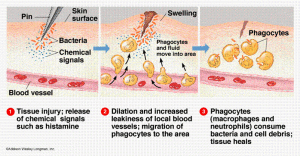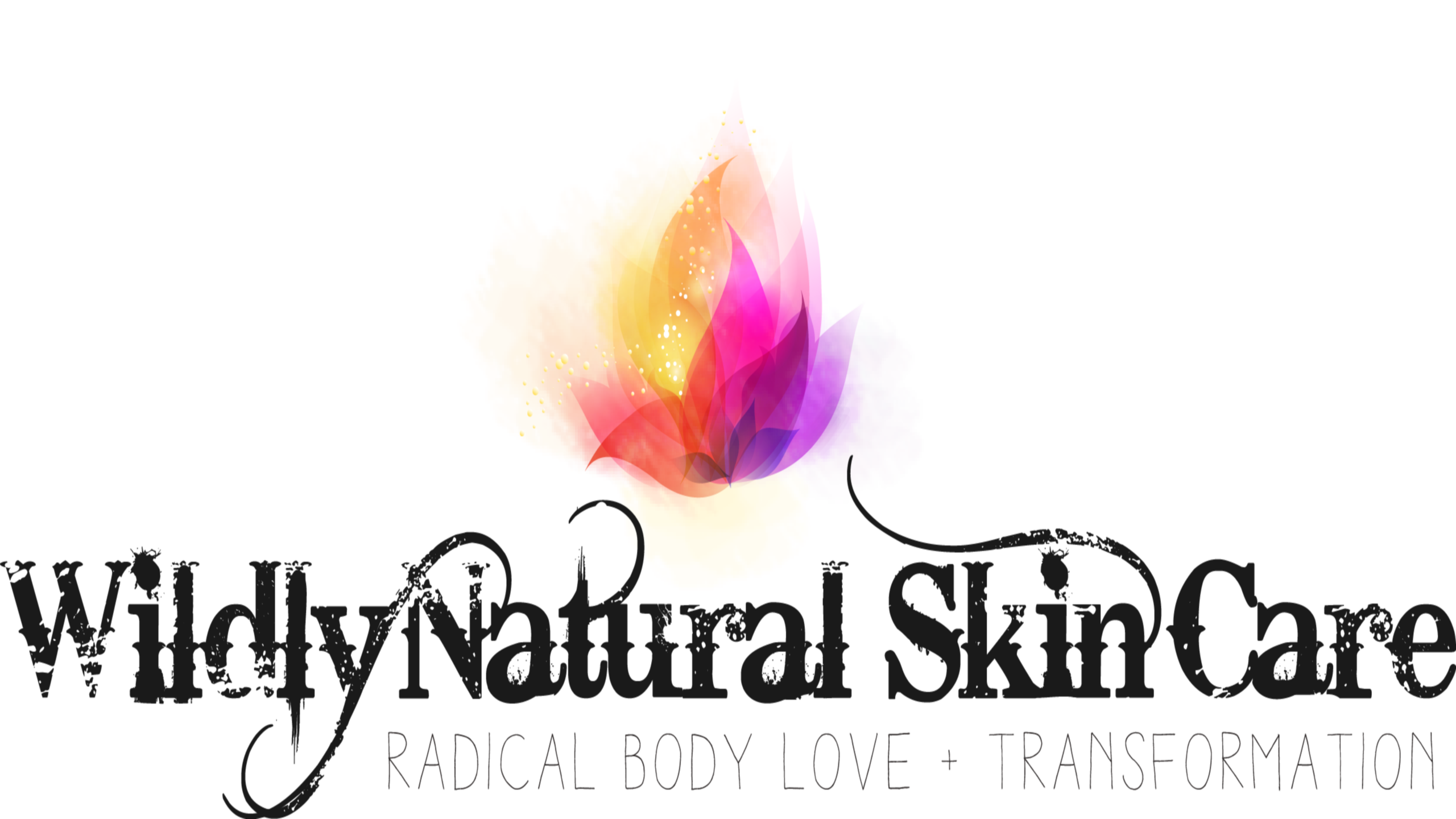What is inflammation and why is it such a big deal? I write so much about inflammation because most skin conditions are caused by it. For example, skin diseases such as acne, eczema, dermatitis, rosacea, razor burn, psoriasis, and various rashes, wounds and swellings are either symptoms of underlying inflammation (chronic) or the result of inflammation on the surface (acute).
Click here to read more about skin dis-ease and natural remedies.
Just consider that the word dermatitis means inflammation of the skin (derma=skin and titis=inflammation).
So what is inflammation really?
The ancients attributed much ill health to the concept “calor, dolor, rubor and tumor” which is interpreted as heat, pain, redness and swelling. These are indeed still
considered the classic symptoms of inflammation.
Inflammation is an immune reaction.
When it “gets word” that there is an invader on the scene, it sends its fighters to the location. Sometimes the battle gets messy and damages the surrounding environment. So for example, if a certain foreign bacterium makes its way through the skin, white blood cells (WBC’s) present in the local tissue will begin to act on them right away (by eating them, or capturing them and presenting them to the captains). They also send out chemical messages to recruit more and different types of white blood cells. Each of the 5 WBC’s works in a different way.

Simplified illustration of the inflammatory response.
Phagocytes are a class of WBC’s that often respond first. Macrophages and the neutrophils are the ones most active during the inflammatory response. Neutrophils stay in the blood, are short-lived and leave pus when they die. They are specialized in the anaerobic conditions of damaged tissues. Macrophages hang out in tissues and are long-lived.
Both types of phagocytes have surface receptors that recognize many bacterial pathogens, engulf and digest them and produce toxic oxygen species (including superoxide, hydrogen peroxide, nitric oxide, etc) to make sure the job is done right. Some of this toxic oxygen can leak out and damage healthy cells, though the body has enzymes to degrade these molecules. If any gets out of the cell and into the surrounding tissue, damage will be done to healthy skin.
Collectively, it is the molecules released by phagocytes upon encountering infection that induce local inflammation. There is accumulation of fluid accompanied by swelling, pain, reddening and heat. Capillaries dilate; blood flow slows; and blood vessel walls become more permeable.
The benefit of this process is that inflammation enables cells and molecules of the immune system to be brought rapidly and in large numbers into infected tissues, thereby preventing the spread of infection.
There are two problems with inflammation:
1) It is uncomfortable, unsightly and often painful. This is when we use topical emollient and soothing herbs.
2) When the body does not “turn off” the inflammation at any point, thus leading to chronic conditions.
Chronic versus Acute Inflammation
Acute inflammation is when, say, you get a minor cut which is red, painful and perhaps pus-filled. This is the body healing itself and is generally resolved in a few days to a week. We can certainly use herbs, oils and other natural substances to relieve pain and associated itchiness and other symptoms.
Chronic inflammation is where the most trouble is. Note this is different from sepsis- uncontrolled acute inflammation. It is a condition where the body is in hyper-mode, constantly having an inflammatory response to perceived threats.
These threats can be psychological stress, environmental stressors like chemicals, and foreign dietary substances (i.e. processed food). The consistent vigilance of the immune system keeps the body “on edge” and the normal stop mechanisms are suppressed.
If you think about it, much of our modern day world is harmful. The structure of current society and its fixes of stressful work, junk food and chemicals everywhere are actually low dose unspecified toxins, that either the body deals with day after day or the stop mechanism becomes non-functioning.
Natural Anti-Inflammatory Substances
Being in nature can be peaceful, restorative and is always filled with prana. Our human bodies have evolved with the plants and are a well-suited match. Herbs and other natural ingredients have much to offer to alleviate inflammation.
Reference: The Immune System by Peter Parham. Garland Publishing/Elsevier Science Ltd. 2000.
Photo credit: Immune Systems: Non-Specific Defense Mechanisms
